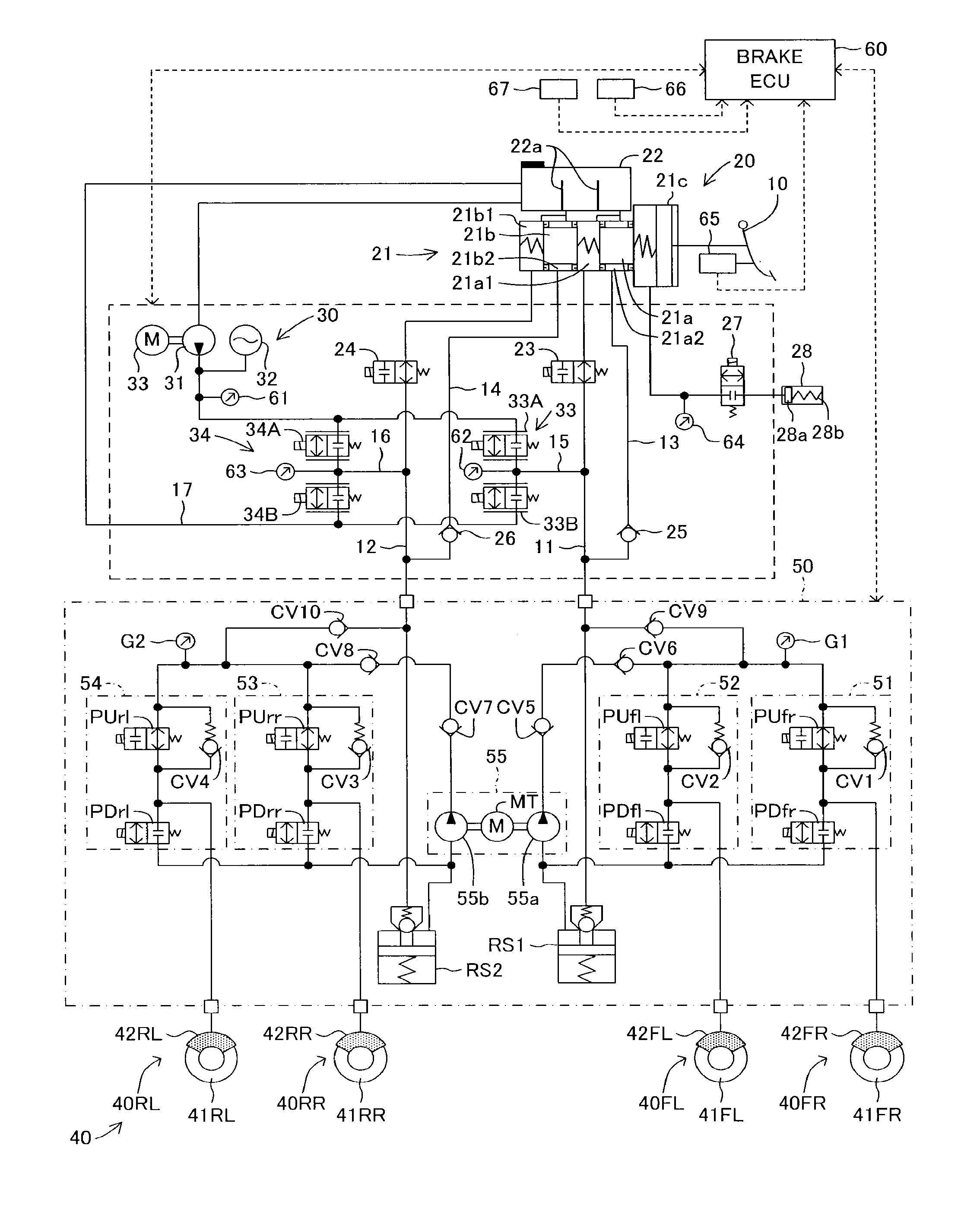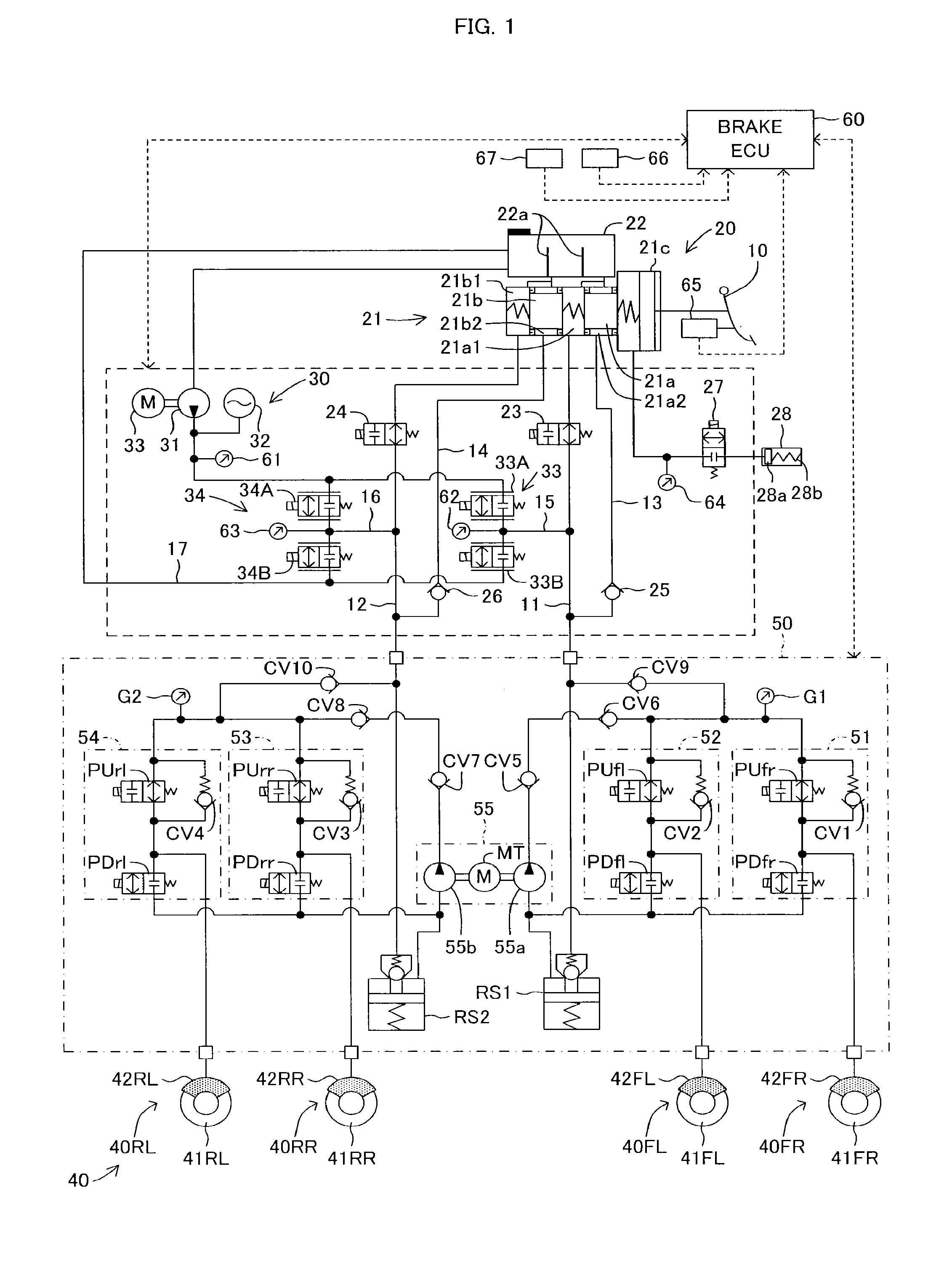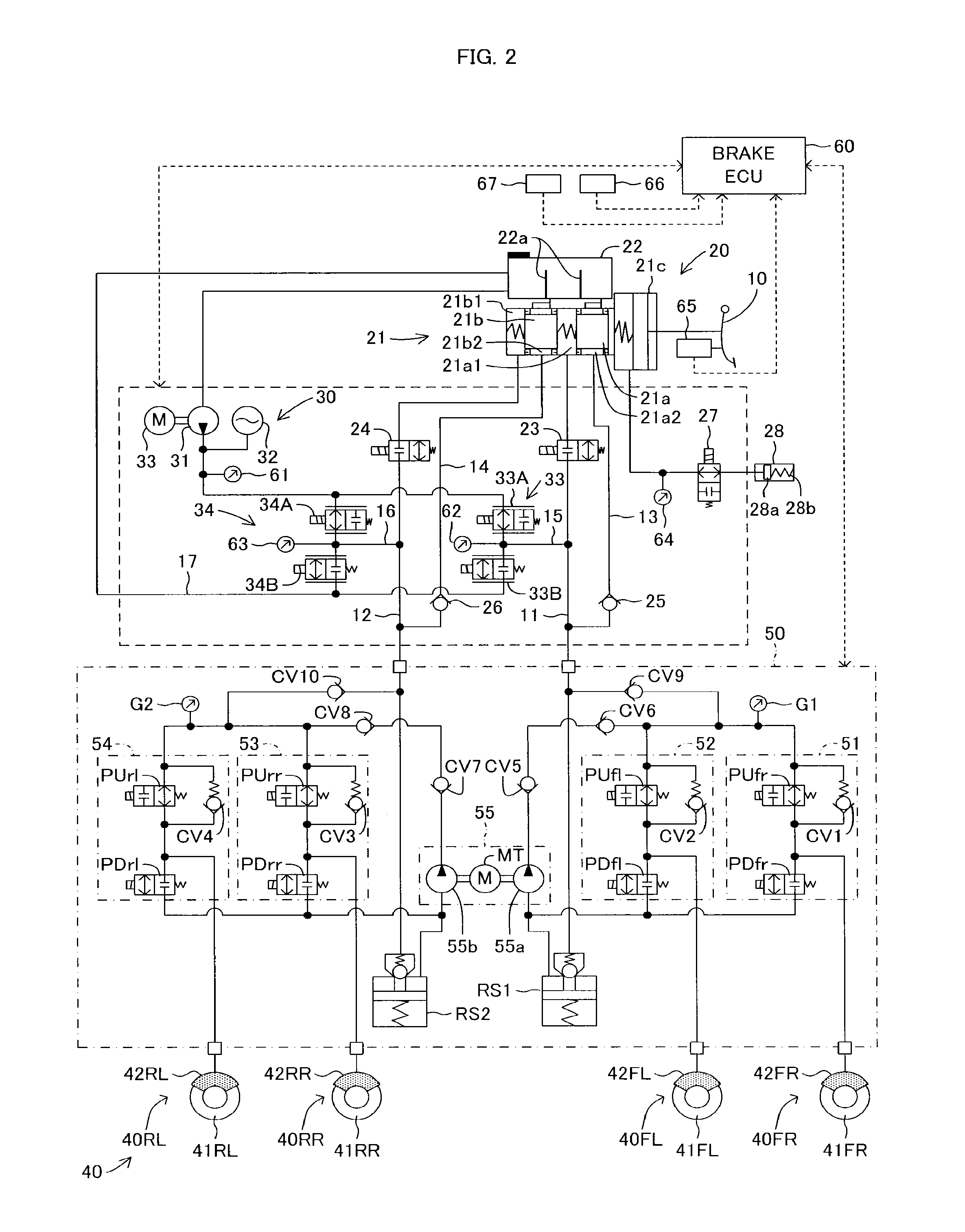Brake device for vehicle
a brake device and vehicle technology, applied in the direction of brake systems, braking components, transportation and packaging, etc., can solve the problems of difficult to quickly supply the pressurized operation fluid to the wheel cylinder, and achieve the effect of suppressing the increase of the cost of using (or diverting) the conventional master cylinder and easy formation
- Summary
- Abstract
- Description
- Claims
- Application Information
AI Technical Summary
Benefits of technology
Problems solved by technology
Method used
Image
Examples
first embodiment
a. First Embodiment
[0040]Below, with reference to the drawings, a brake device for a vehicle according to embodiments of the present invention will be described. FIG. 1 illustrates a schematic system view of a brake device for a vehicle according to a first embodiment. The brake device for the vehicle is configured to include a brake pedal 10, a master cylinder unit 20 serving as a regenerative actuator, a brake fluid pressure generation device 30 serving as a regenerative actuator, a brake unit 40, a brake fluid pressure control valve device 50 serving as a brake fluid pressure control actuator and a brake ECU 60 for managing a brake control.
[0041]The master cylinder unit 20 includes a master cylinder 21 and a reservoir 22. As illustrated in FIG. 1, the master cylinder 21 is a tandem type master cylinder having pressurizing pistons 21a and 21b. The master cylinder 21 includes a brake booster 21c. A pedal depression force input to the brake booster 21c by a depression operation of t...
second embodiment
b. Second Embodiment
[0098]According to the first embodiment, the bypass pipe routes are formed by the bypass pipes 13 and 14 and the check valves 25 and 26, which connect the bypass pipes 13 and 14 to the master pressure pipes 11 and 12, respectively. Thereby, according to the first embodiment, the reservoir 22 is in communication with the brake fluid pressurizing section 55 of the brake fluid pressure control valve device 50 through two atmospheric pressure chambers 21a2 and 21b2 formed in the master cylinder 21 of the master cylinder unit 20, the bypass pipes 13 and 14 and the check valves 25 and 26. Therefore, according to the first embodiment, the pumps 55a and 55b of the brake fluid pressurizing section 55 can suction the brake fluid from the reservoir 22 of the master cylinder unit 20 through the check valves 25 and 26 and can pressurize the suctioned brake fluid, thereby to supply the pressurized brake fluid (or the brake fluid pressure) to the upstream sides of the FR and FL...
PUM
 Login to View More
Login to View More Abstract
Description
Claims
Application Information
 Login to View More
Login to View More - R&D
- Intellectual Property
- Life Sciences
- Materials
- Tech Scout
- Unparalleled Data Quality
- Higher Quality Content
- 60% Fewer Hallucinations
Browse by: Latest US Patents, China's latest patents, Technical Efficacy Thesaurus, Application Domain, Technology Topic, Popular Technical Reports.
© 2025 PatSnap. All rights reserved.Legal|Privacy policy|Modern Slavery Act Transparency Statement|Sitemap|About US| Contact US: help@patsnap.com



